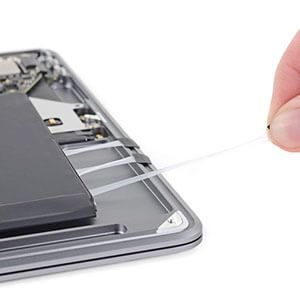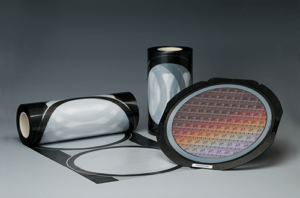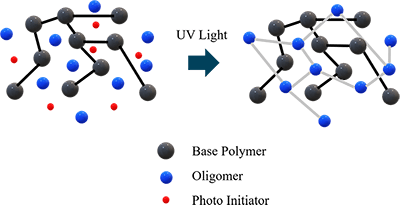5 Removable Double Sided Tapes-Residue Free
2021/06/15

When the permanent bonding type of double-sided pressure sensitive adhesive tape is removed, it often gets violently dismantled and then uses solvents or detergents to clean off any residue. This can damage both surfaces if not done properly which makes this process time-consuming as well laborious leading to an overall bad effect for your project! Here are 5 types of removable double sided tapes that don’t leave any sort or attachment on surfaces after being removed.
Interface Condition After Tape Removal
When the double-sided pressure-sensitive tape and the adherend are separated from each other, according to the condition of the separation interface, they can be divided into the following categories:
There is complete adhesive residue on the surface of the adherend and the tape, and it feels sticky to the touch. The separation interface occurs inside the pressure-sensitive adhesive layer, and the adhesive layer is cohesively damaged by external force.
The pressure-sensitive adhesive tape remains completely on the surface of the adherend, and feels sticky to the touch, while the other side of the adherend does not have any visible residue on the surface of the adherend, and there is no sticky feeling to the touch.
The adhesion between the pressure-sensitive tape and the adherend is very firm, and the structure of the adherend is damaged and separated when external force is applied, which does not cause damage to the bonding interface and the interior of the adhesive layer. The substrate failure is not related to the adhesive. It is the problem of the substrate itself.
5 Types of Removable Double Sided Tapes
1. Non-Woven Substrate Double-Sided Pressure-Sensitive Tape
The non-woven fabric is soft but has high tensile strength. The fiber network structure of the non-woven fabric has excellent tensile strength in both transverse and longitudinal directions, and the pressure-sensitive adhesive and the substrate are fully infiltrated to establish a firm adhesive strength. In the process of tape removal and peeling, there is no tensile fracture, no cohesive failure of the adhesive layer and no substrate failure.
The non-woven double-sided tape can be used for the assembly of electronic and electrical products and office equipment components, which can not only ensure a firm bonding strength, but also facilitate future maintenance and disassembly.
2. Double Coated Differential Adhesive Tape
The two sides of the tape substrate are coated with pressure-sensitive adhesives with different viscosities. When using, just attach the weakly adhesive side of the tape to the surface of the object that needs to be removed, and another strong pressure-sensitive adhesive that can permanently bond the surface of the adherend.
Since the cleaning and removal function of this type of tape is to sacrifice part of the viscosity of the pressure-sensitive adhesive, it is often used in applications that do not require high bonding strength, or supplemented by other fixings to ensure strength. In addition, the viscous differentiated double-sided tape can only achieve one-sided cleaning without residue, while it is still difficult to remove the pressure-sensitive adhesive on the surface of the adherend on the other side.
Related Products: 8150HM
3. Stretch Release Tape

The base material of the pressure-sensitive tape is a special polymer polyolefin material, which is coated with pressure-sensitive adhesive on both sides. The bonding method is no different from ordinary double-sided pressure-sensitive tape, and it can be bonded by applying pressure. When the tape needs to be removed, as long as one end of the tape is held and stretched horizontally with the bonding interface, the tape will be severely deformed, and the elongation rate can reach more than 500%. However, due to the high breaking strength of the substrate, it can ensure that no breakage occurs during the stretching process, so that the tape can be smoothly pulled out and removed from the interface of the adherend.
The advantage of the stretchable removal tape is the clean removal of both sides, and no additional special equipment is required for the removal process. It can be used for both temporary bonding and permanent bonding. Since the removability of the pressure-sensitive tape is stretched by external force, during the bonding process, it is best to reserve a small section of tape exposed on the bonding surface as a handle for easy removal. In addition, the stretching direction of the tape is very important for the smooth removal of the tape. For the adhered objects with complex structures, it is necessary to confirm whether there is enough space for the removal of the tape
4. UV Release Tape

The addition of cross-linkable oligomers and photo initiators to the pressure-sensitive adhesive can significantly change the adhesive force before and after UV irradiation, and realize the function of no adhesive residue after peeling. This technology was originally used to hold wafers during semiconductor dicing. Before UV irradiation, the pressure-sensitive adhesive has good initial adhesion and bonding strength, and the wafer is fixed on the base with tape and then cut or ground. After the operation, UV light is used to irradiate the bonding surface with a certain intensity for a short period of time, and the cross-linking reaction occurs until the cross-linking is excessive, which greatly reduces the adhesion, and the tape and wafer are separated without residual adhesive.
Since the photosensitive removable tape needs to use UV light irradiation to reduce the viscosity and separate the bonding interface, this requires the adherend to have transparency, which is conducive to the penetration of UV light. This limits the application of the product to a certain extent. In addition, due to the unstable chemical bond structure in the pressure-sensitive adhesive, it is not suitable for long-term permanent bonding, but is more suitable for short-term bonding during processing. Since sunlight or living lighting contains more or less ultraviolet light, it must be packaged in shading to prevent failure.
Related Product: UV-6165
5. Heat Removable Tape
Heat-expandable microbeads are added to the pressure-sensitive adhesive, and the tape has the ability to be removed under heating conditions. At normal temperatures, the tape has the properties of ordinary pressure-sensitive adhesives. When the tape needs to be removed, the tape is heated to above 80°C, and the volume of the microspheres in the pressure-sensitive adhesive begins to expand violently by 7-10 times, and the contact area between the pressure-sensitive adhesive layer and the adherend surface decreases sharply, and there is no residue after removal.
The removal function requires heating the adhesive layer. Considering the heat resistance of the adherend, pay attention to whether the temperature will affect the adherend. In addition, if the peelable temperature is accidentally reached during the bonding process, it will cause premature failure of the pressure-sensitive tape bonding, so heat-peelable pressure-sensitive tapes are usually used for short-term temporary bonding applications, such as semiconductor, electronic component processing and medical supplies industry, etc.
Category




